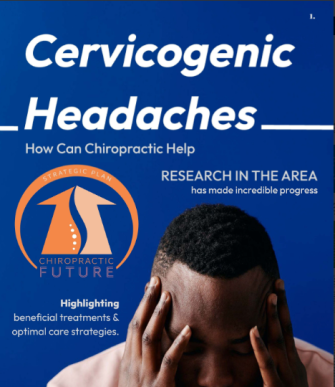Chiropractic Future Research Workgroup Releases Headache Report
 Headaches (HA) are one of the most common disorders of the nervous system (link to How to reduce risks of pain meds for HA) with most people experiencing occasionally. The World Health Organization (WHO) estimates that as many as half of the world’s population experience a headache on a regular basis. From a minor annoyance to debilitating pain and sensitivity to light or sound, there is a wide range of causes and symptoms experienced that fall under the name of “headache”.
Headaches (HA) are one of the most common disorders of the nervous system (link to How to reduce risks of pain meds for HA) with most people experiencing occasionally. The World Health Organization (WHO) estimates that as many as half of the world’s population experience a headache on a regular basis. From a minor annoyance to debilitating pain and sensitivity to light or sound, there is a wide range of causes and symptoms experienced that fall under the name of “headache”.
One of the most common types, accounting for as many as 1/5 of all headaches, is the cervicogenic headache (CGHA). The name gives a basic description of this type of headache: cervico –related to the cervical spine, also known as the neck and genic –beginning. Chiropractic Future leadership member and chiropractic physician, Dr. Mark Sanna states: “Broadly speaking, CGHA is classified as unilateral head pain that can be modified by neck or shoulder movement, as well as pressure over the neck and head.” It may be “characterized by pain originating in the neck or occipital area, which extends or moves into the face and head.”
Much research has been conducted on CGHA regarding causes, mechanics, and most effective treatments. Recently, the Chiropractic Future Strategic Plan (CFSP) compiled a vast amount of research and published a synopsis to help inform healthcare practitioners and the general public. This report includes an overview of CGHA, patient experience and pain patterns, diagnostic criteria, red flags for clinicians to be aware of, best known treatment options and risk of adverse events.
Common complaints from patients experiencing CGHA include increased pain with neck or head movements, stiffness in the neck or reduced range of motion of the neck. It is not uncommon for patients to experience a loss of 25% of their normal range of motion, and sometimes even more. Doctors of Chiropractic are trained to identify red flag symptoms that may indicate a more serious condition and refer patients for care from other specialties when appropriate.
Key findings regarding treatment for CGHA include:
- Chiropractic adjustments are beneficial for improving pain levels, improved function, and reducing the frequency of HA symptoms. Some patients begin seeing results in as little as 2 weeks.
- Chiropractic adjustments have been found to reduce the frequency of CGHA for up to 3 months for most patients with some experiencing a decrease for up to a year.
- Research shows 12-18 sessions of chiropractic adjustments (also referred to as spinal manipulation) is enough to have “clinically significant improvements in HA frequency”.
- Most common side effects for chiropractic care are short-term, go away by themselves and are usually mild to moderate.
For more information, or to review the complete document along with references, click HERE..
In addition to the patient centered document, the research workgroup created a more detailed, clinical document that can be used by chiropractic and medical professionals to help them stay up to date with the latest in research findings. To review the complete professional document, along with references, click HERE.
Like other healthcare professionals, chiropractors receive continuing education annually to learn new skills, increase proficiency, and review the latest research findings. This helps them provide the most appropriate treatment recommendations for their patients. If you or a loved one is experiencing headaches, talk to your local chiropractor about how safe, natural chiropractic care can help manage pain, maintain function, and reduce frequency of your headache symptoms.
If you do not have a chiropractor, you can find a TCA member doctor near you at www.catalog.tnchiro.com/Directory .
You can also find additional information on chiropractic care, headaches, back pain as well as other health related topics at www.tnchiro.com/articles and www.tnchiro.com/research .
SOURCES:
Sanna, Mark D.C. “Treatment strategies for cervicogenic headaches” https://www.chiroeco.com/treatment-strategies-for-cervicogenic-headaches/ January 22, 2024 Accessed March 7, 2024
Chiropractic Future Research Workgroup. “How quickly can chiropractic care help with Cervicogenic Headaches?” https://storage2.snappages.site/Q3CP9P/assets/files/Headache-Blog-Article-2-1824.pdf Accessed March 7, 2024
Chiropractic Future Research Workgroup. “Cervicogenic Headaches – How Can Chiropractic Help.” https://chiropracticfuture.org/cervicogenic-chiropractic Accessed March 7, 2024
TNChiro.com. “How to Reduce the Risks of Pain Medications for Headaches” https://www.tnchiro.com/articles/how-to-reduce-the-risks-of-pain-medications-for-headaches/ September 18, 2023